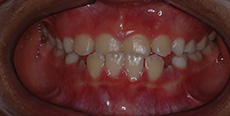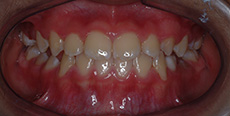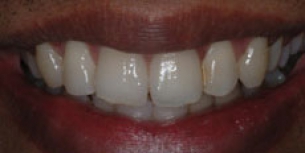Orthodontics
Dr. Ang believes that all children deserve a healthy and beautiful set of teeth. That’s why she provides two-phase orthodontics and braces treatment to ensure that each child she sees grows up to have straight teeth, a properly sized jaw, a straight profile, and a gorgeous smile.
Children’s Two-Phase Orthodontic Treatment
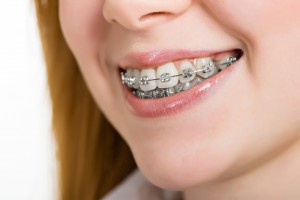 Your child’s dental health may be best served by a two-phase orthodontic treatment plan, particularly when problems are noted early in your child’s development. However, a single phase of treatment may also be the more appropriate approach, depending in part on the age of your child. Seventy-five percent of children aged 12 and up need orthodontic treatment, but by 12 years of age, 90% of a child’s face has already developed! By guiding facial development at an earlier stage, 80% of the treatment can be accomplished before all of the adult teeth are present.
Your child’s dental health may be best served by a two-phase orthodontic treatment plan, particularly when problems are noted early in your child’s development. However, a single phase of treatment may also be the more appropriate approach, depending in part on the age of your child. Seventy-five percent of children aged 12 and up need orthodontic treatment, but by 12 years of age, 90% of a child’s face has already developed! By guiding facial development at an earlier stage, 80% of the treatment can be accomplished before all of the adult teeth are present.
A child’s first permanent molars and incisors usually come in by age 7, and many orthodontic problems can be evaluated at that time. However, parents certainly need not wait until their child is 7 years old to contact Dr. Ang’s office with any concerns.
Phase One Treatment
Phase One is early treatment (for children aged 5 to 12), initiated for:
- Habits such as tongue thrusting and thumb sucking or finger sucking
- A constricted airway due to swollen adenoids or tonsils
- Mouth breathing or snoring problems
- A bad bite (malocclusion)
- Crowded teeth
- Bone problems (e.g., a narrow jaw or underdeveloped jaws)
For example, mouth breathing can lead to orthodontic problems as well as problems such as lack of oxygen and poor sleep habits, leaving a child prone to daytime fatigue, an inability to concentrate in school, and headaches.
A deep overbite, narrow jaws, or a receding lower jaw may cause:
- Headaches
- Neck pain
- Dizziness
- Earaches
- Fainting
- Clicking or locking jaws
- Difficulty opening jaws
- Ringing in the ears
Almost 50% of children who need orthodontic treatment due to a ‘bad bite’ have an underdeveloped lower jaw. In addition, narrow jaws can confine the tongue and interfere with normal speech. Orthodontic treatment is not just about a pretty smile!
In Phase One treatment, a functional appliance is used. A functional appliance is a device that’s designed to make bone or dental changes by using the patient’s own muscles to produce orthodontic or orthopedic forces. Such an appliance can be removable or fixed. Functional appliances can be used to correct all of the problems listed above, and they can also often prevent the following:
- Removal of adult teeth
- Fang-like tooth appearance
- Lengthy use of braces
- Speech difficulties
It is critical to correct any functional or jaw problems that a child might have as soon as the problem is diagnosed. In addition, children between the ages of 8 and 11 are often much more cooperative than children who are 12 to 14. By treating problems early in your child’s development, you may also save money and prevent the need for more extensive treatment in the future.
Phase Two Treatment
Phase Two orthodontics treatment (for children aged 12 to 14) is comprised chiefly of braces, implemented by Dr. Ang for Toronto-area patients at her office in Markham. Braces are usually worn for 1-1/2 to 2 years, to straighten crooked teeth, for example. The teeth can also be whitened at this stage, if necessary.
Your child’s dental needs are as unique as his or her fingerprints. Please feel free to bring all of your questions and concerns to Dr. Ang to gain a complete and thorough understanding of how your child might benefit from orthodontic treatment.
Orthodontics for Adults
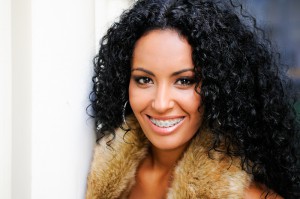 According to the American Association of Orthodontists (AAO), one out of every five patients undergoing orthodontic treatment today in the United States or Canada is an adult. That’s a lot of grown-ups at the orthodontist’s office — nearly one million people. And many of the orthodontic problems that adults are concerned about can be corrected as easily as they can for children. Orthodontic forces move the teeth in the same way for 40-year-olds as they do for 10-year-olds. At the office of Dr. Susie Ang, braces and other types of orthodontics are used regularly to help many adults overcome dental problems that may have existed for decades.
According to the American Association of Orthodontists (AAO), one out of every five patients undergoing orthodontic treatment today in the United States or Canada is an adult. That’s a lot of grown-ups at the orthodontist’s office — nearly one million people. And many of the orthodontic problems that adults are concerned about can be corrected as easily as they can for children. Orthodontic forces move the teeth in the same way for 40-year-olds as they do for 10-year-olds. At the office of Dr. Susie Ang, braces and other types of orthodontics are used regularly to help many adults overcome dental problems that may have existed for decades.
The obvious difference between adults and children when it comes to orthodontic treatment is that an adult’s teeth and jaw aren’t still growing, as are a child’s. However, this static nature of an adult’s facial bones doesn’t mean that it’s too late for orthodontics once a patient has reached adulthood. An orthodontic treatment may or may not take a bit longer for an adult compared to a child with the same dental problem, but a treatment plan recommended by a qualified orthodontist (whether for oral health or cosmetic reasons) is a wise move nevertheless. The value of dental health and a smile you can be happy to show can’t be overestimated.
For an adult, orthodontics may be only part of an overall dental treatment. Adults are more likely than children to have experienced damage or loss of their gums and/or the bone supporting their teeth (i.e., due to periodontal disease). Adult teeth are more likely to show some wear and tear, whether from normal aging or from some type of trauma. Missing permanent teeth, damaged teeth, and jaw problems can all affect an adult’s dental needs.

